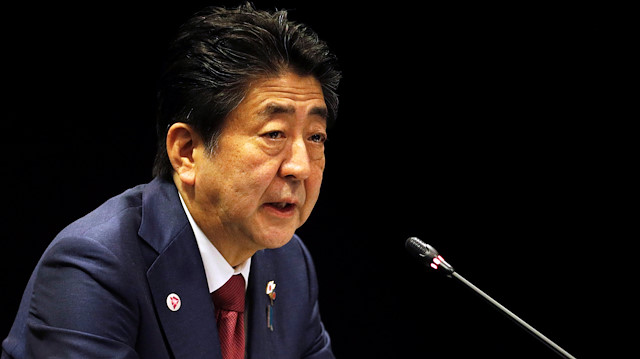
Prime Minister Shinzo Abe on Friday became Japan's first leader to visit the Australian city of Darwin since it was bombed by Japanese forces during World War Two, as the former foes look to shore up a crucial alliance.
Abe and Australian Prime Minister Scott Morrison laid wreaths at Darwin's Cenotaph war memorial before observing a minute's silence to acknowledge war dead and strengthen a bond that has evolved in the decades since.
"This is an important time of healing, it's an important time of reconciliation and I know that will always be difficult (for people) who were directly touched by these events," Morrison said on Friday, ahead of Abe's arrival.
Two months after the Japanese attack on the U.S. naval base at Pearl Harbor in December 1941, Japanese air forces began bombing the northern Australian port city, the first time the global conflict reached Australian soil.
The first two raids on Feb. 19, 1942, killed about 250 people, according to the Australian War Memorial. Ships, aircraft, and civil and military facilities were destroyed in addition.
There were a further 62 Japanese raids up to November 1943, but the War Memorial said none were as heavy as the first two, and most caused no damage or casualties.
Abe and Morrison were set to hold trade talks later on Friday before issuing a joint statement. The visit will also mark the commencement of operations of the Ichthys gas field.
In 2016, Abe became the first Japanese leader to visit the USS Arizona Memorial, built over the remains of the sunken battleship USS Arizona at Pearl Harbor, together with then President Barack Obama.
Ties between Australia and Japan have improved steadily since the 1950s, including a 2007 "joint security pact" on coordination on matters dealing with maritime and aviation safety.
A $13.5-trillion regional free trade agreement between Australia, Japan and nine other countries takes effect next month.
During the period of the Darwin bombings, Japanese submarines also sank ships at the biggest city, Sydney, and at Newcastle 160 km (100 miles) to the north, killing more than 50.
The 1941 Pearl Harbor attack triggered the U.S. involvement in the war, alongside the British, although Australian troops were already stationed in Europe and North Africa.





